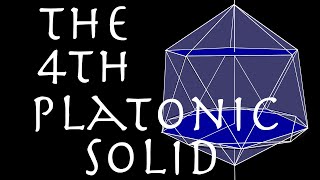Regular polyhedra | Deltahedra | Polyhedral stellation | Kepler–Poinsot polyhedra
Great icosahedron
In geometry, the great icosahedron is one of four Kepler–Poinsot polyhedra (nonconvex regular polyhedra), with Schläfli symbol {3,5⁄2} and Coxeter-Dynkin diagram of . It is composed of 20 intersecting triangular faces, having five triangles meeting at each vertex in a pentagrammic sequence. The great icosahedron can be constructed analogously to the pentagram, its two-dimensional analogue, via the extension of the (n–1)-dimensional simplex faces of the core n-polytope (equilateral triangles for the great icosahedron, and line segments for the pentagram) until the figure regains regular faces. The grand 600-cell can be seen as its four-dimensional analogue using the same process. (Wikipedia).




















